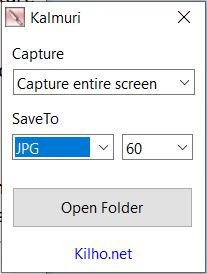

At first sight, there are no other available options but if you right-click anywhere within the main window, the main menu is revealed. The top one enables you to select the action to perform, while the other helps you choose the output format. The application features one small-sized interface that only comprises two drop-down menus. It requires no installation and is ready to go anytime, waiting quietly for your actions in the tray area, so it doesn’t interfere with your work. This protection kit is also present in some desktops but for those that are missing it, CloudReady opts to use software encryption instead.Kalmuri provides one of the most simple means of capturing screen activity, acting as both a snapshot taking utility and a screen recorder. When it comes to security, Chrome OS utilizes TPM for encryption. Instead, a reinstallation from USB is more recommended to reset your computer. Powerwashing and other methods utilized by Chromebooks to discard device data are not implemented here. Additionally, the Forced Re-Enrollment policy for Chrome OS is not applicable to CloudReady.

However, parallels integration isn’t supported in CloudReady while some Chrome OS devices have parallels that are capable of running a local virtual machine of Windows. Moreover, it is more flexible as compared to Chrome OS as its operating system can be changed even without waiting for a hardware refresh. For one, this OS tool is designed to be installed on existing PC and Mac hardware while Chrome OS can only be found on official Chrome devices. Mainly because both are built on Google’s Chromium OS although it should be highlighted that they are not exactly the same. As stated, there'll be a lot of instances in your CloudReady user experience that you will find resemblance with Chrome OS’ operation flow.


 0 kommentar(er)
0 kommentar(er)
